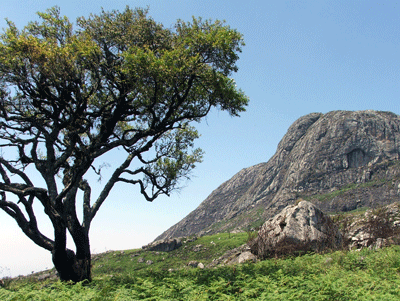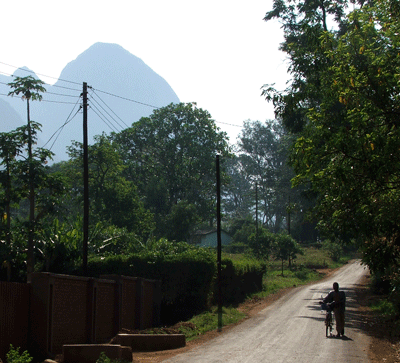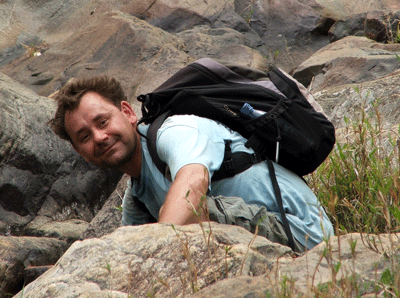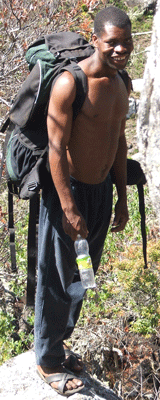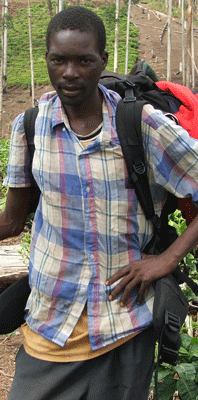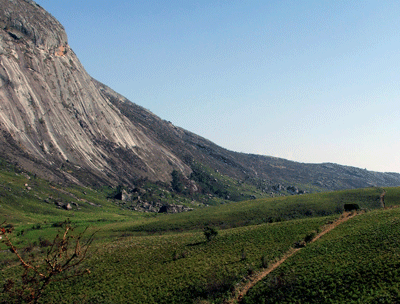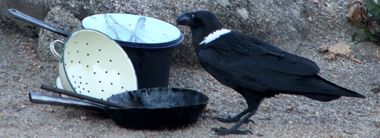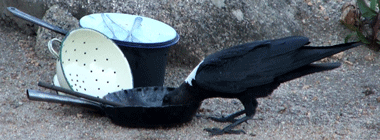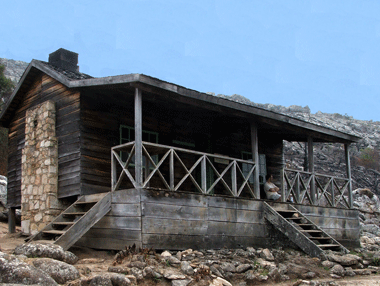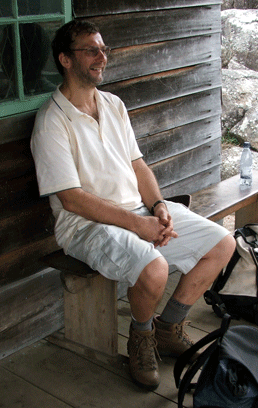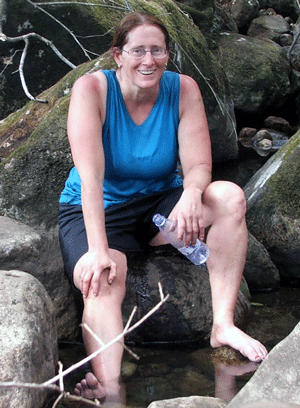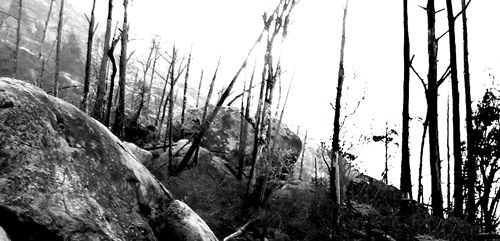|
earlier, and they were quite open about how they operate, their costs, and the prices they charge. So I thought I kind of owed it to them to buy some of their wares as a thank you for their information. MMCT is hoping to set up some kind of “sustainably harvested cedar” certification for the curio trade, but until that happens, there’s no way to ensure you’re buying permitted cedar.
So Paul and I pushed ourselves up the mountain on our illegal walking sticks, enjoying their illicit scent. We didn’t go up from Likhubula, as none of us had time to traverse the whole plateau. Instead, we headed up what’s called the Sombani trail, which runs up the eastern side of the escarpment. It was hard, but definitely worth the climb. The plateau, when we reached it, was quiet and peaceful, gentle green hillsides and a huge open sky. Paul said it reminded him of the Scottish landscape, hardly what he expected from Mulanje. I liked the open space. The climb up had been through forests and the charred ruins of forests, but nothing blocked the view on the plateau. We were the only people for miles around, and the only noise was the breeze and the birds and the insects. It was a very calming place.
We spent the night at Sombani hut, one of a network of huts that used to be summer cottages of wealthy expats but are now maintained for hikers by MMCT, the Forest Department, and the Mulanje Mountain Club. These are real cottages – not the misnamed mansions of the 19th century robber barrons outside of New York City or the obscene new ten-bedroom monstrosities lining the beaches of North Carolina’s Outer Banks. Sombani hut has two rooms, a stone fireplace and chimney, and a porch. We cooked our dinner in the fireplace, and Paul, Julian and I all set up our camp beds – stored in the hut for Mountain Club members – on the porch to sleep outside. Each hut is maintained by a warden who lives there. He brought us water from the stream, heated it for us to shower, and brought us fuelwood for our fire. Our porters slept and ate with him, sharing the food we had brought for their dinners and breakfasts. It was strange to be waited on, but also nice not to have to worry about water or firewood – luxurious, for a simple place to stay. The moon was nearing full, and it rose behind our outdoor beds in the evening, lighting the plateau and the peak opposite us.
The next day we split up, Julian heading straight down with one of the porters while Paul and I took a different route with the other two. The couple of miles on the plateau to our downward trail were lovely, up and down the gentle hills, with the peaks towering above us. The climb down was hard, though, at least for me. It was steeper than the route up, jumping down rocks and in places |
|
|
|
slithering down ladders where the rocks were too steep to walk down. For a while it was fine, but then my legs balked at any more steps down, and I went slower and slower, while Paul and the porters raced ahead. It was, to put it bluntly, Not Fun. And it went on forever, it seemed, especially as the porters kept assuring me there was just a little way, when in fact we were still miles from the bottom. In places I simply wanted to give up, but that wasn’t an option. So plodded on, even steep dusty slope because I just couldn’t control my legs well enough to scamper down it the way the porters did. |
